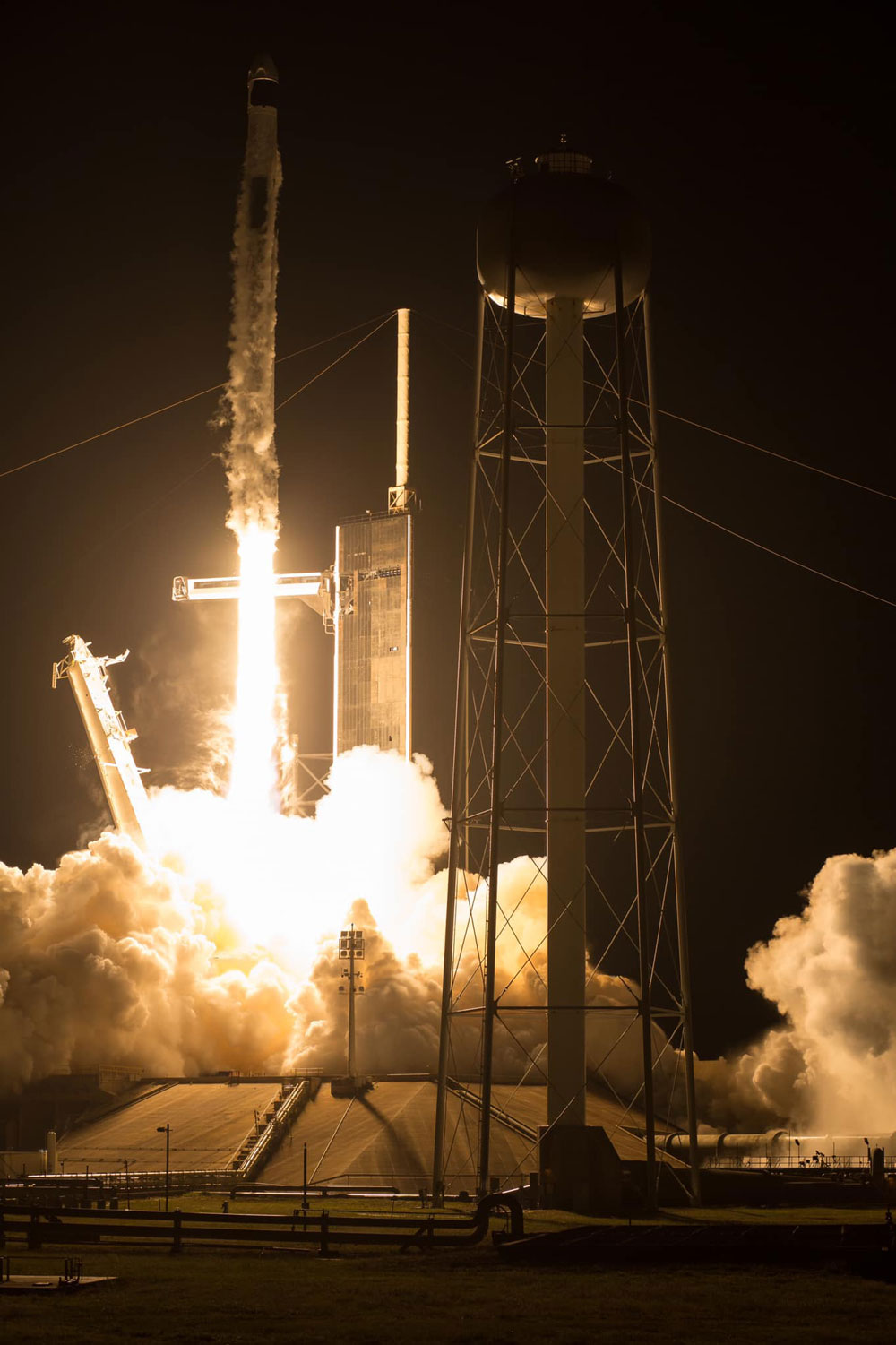
Space Coast residents had a chance to wake up Thursday to the 18th orbital launch of the year from Cape Canaveral, as a SpaceX Falcon 9 topped with 53 Starlink internet satellites lifted off just before sunrise.
With at least five more launches expected this month, Space Florida President and CEO Frank DiBello said Wednesday that local launch facilities might handle more than 40 additional launches before the end of 2022 from private companies, NASA and U.S. Space Force.
“We’re likely to see 60, 61, 62 launches this year,” DiBello said during a conference call with the Space Florida Board of Directors.
“That, to me, is really significant in terms of the investments that we’ve made over time, thanks to the board and to our partnership with (the Florida Department of Transportation) and to the support that we’ve had from the Legislature to investing in infrastructure that supports the increased capability that we have,” DiBello added.
Hours before Thursday’s launch, SpaceX’s Dragon Endurance spacecraft, carrying three NASA astronauts and a European Space Agency mission specialist, splashed down in the Gulf of Mexico off Tampa Bay. The Dragon’s return wrapped up a 176-day expedition to the International Space Station that began with one of the 31 rockets that reached orbit from Cape Canaveral Space Force Station and NASA’s neighboring Kennedy Space Center in 2021.
Since the start of 2022, launches from licensed sites tied to Space Florida, the state’s aerospace-arm, have put about 250 tons of equipment and supplies into space. Last year, Space Florida facilities accounted for about 370 tons of materials put into space, including 1,730 satellites.
“We could conceivably in the first four months of this year — having done 250 (tons) — we could easily see 550 to 600 tons to orbit this year, which is a big boost in our lift capacity,” DiBello said.
Meanwhile, with nearly 700 satellites launched so far this year, including the 53 that went up Thursday, DiBello said the cape is ahead of the 2021 pace, which ended 30 percent higher than in 2020.
“We see a decade where between (50,000) and 100,000 satellites are going to be launched by 2030,” DiBello said. “And we want to try to capture a lion’s share of those out of Florida. Again, what’s driving the growth in the industry is our insatiable demand for bandwidth that all of us have. We feed that market regardless of the device that we’re using.”
Space Florida is also looking to focus on capturing a piece of an emerging market that services the space economy, by developing the capabilities to send robots and people into space to extend satellite life, move crews, conduct research and manufacturing and undertake the removal of space debris.
“We’re really looking at this industry,” DiBello said. “Forecasts are for this to be between $15 (billion) and $20 billion (in economic impact) by the end of the decade. And that’s not insignificant.”
Among the more-anticipated launches this year is the uncrewed Artemis I, now expected in August, which would mark the first integrated test of NASA’s deep-space exploration systems: the Orion spacecraft, Space Launch System rocket and the ground systems at Kennedy Space Center. Orion is planned to travel 280,000 miles from Earth, beyond the orbit of the Moon.
Also in August, the Psyche asteroid explorer is expected to be sent to a region between the orbits of Mars and Jupiter aboard a SpaceX Falcon Heavy rocket.
–Jim Turner, News Service of Florida





























Leave a Reply